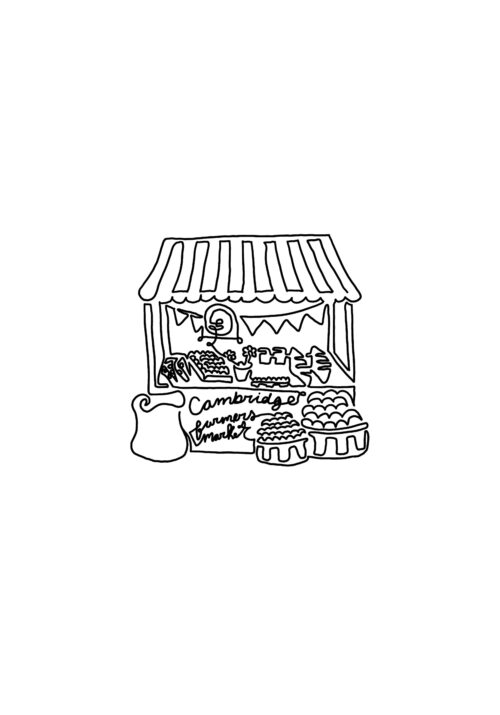On an abnormally-warm afternoon in March of 2008, a collection of Washington political consultants, campaign managers, lobbyists, and other swamp creatures gathered at the center of DuPont Circle in our nation’s capital. One member of this curious conglomeration asserted they were there “to receive a message.” Another claimed they were “on the precipice of changing American politics forever.”
They stood outside for forty minutes and forty seconds. It was then that the sky became dark and the earth began to shake. This was no normal afternoon in “the District.” And then an angel-like apparition (later revealed by One America News to be statistician Nate Silver) descended from the heavens with two stone tablets in hand. And upon those stone tablets was the inscription of just one word—“Data.”
…
Over the next fifteen years, Washington would wallop into an arms race of data weaponization: procurement, analysis, and implementation. Cambridge Analytica and Axiom had become the new Raytheon and Lockheed Martin. The two rival factions that really “ran” Washington at the time—the Democratic Party and the Tea Party—threw millions at these data operations with the hope of “getting an edge” over the other.
However, these data “strategy” political consultants have been missing perhaps the most important metric in American political data science. Somewhere in between obtaining their fancy degrees and purchasing their last $15 Tatte breakfast sandwich they developed a severe case of hyperopia (that’s the opposite of myopia). In fact, the truth had been right in front of them all along.
As a lifelong fan of the New York Jets, I believe that everything happens for a reason. So I know that Nate Silver did not select DuPont Circle as his landing spot by mere coincidence. On that consequential March afternoon, Mr. Silver was not just telling us what to look at (data), but he was also telling us where to look (DuPont Circle).
Every Sunday afternoon, DuPont hosts a farmers’ market. According to the organizer FRESHFARM, inc., the market “teaches Washingtonians to love their fruits and vegetables” and boasts “more than 50 farmers offering conventional and certified organic goods” such as produce, meat, cheeses, baked goods, and pickles. The farmers’ market has been written about in The Wall Street Journal, the Washingtonian, and has even attracted acclaim from our “friends across the pond” in The Financial Times of London.
At first, I wondered: why so much hullabaloo about an unassuming farmers’ market? But then, I realized: It was all related. Nate Silver. Data. Democrats. DuPont Circle. Farmers’ markets. The New York Jets. The message that Nate Silver was trying to convey on that fateful afternoon was not just that we needed data, but that we needed the right data. He showed us where the answer lay, much like the secret government base under the Denver International Airport— right beneath our feet. My dear friends, Nate Silver was trying to tell us that the true barrier to Democratic electoral success is the nationwide proliferation of farmers’ markets.
Allow me to explain:
The key metric here is DRBVLPFM—or “Democrat Rust Belt voters lost per farmers’ market.”
With overpriced microgreen smoothies, leashed children, and plenty of those frog-looking shoes where each toe has its own slot, it is no wonder that farmers’ markets are a leading cause of Democratic vote loss.
From 2012 to 2020, in both Pennsylvania and Ohio, Democrats gained 320,000 new voters—a miniscule increase compared to the GOP gain of 1.29 million. This implies roughly 1.6 million new voters. Assuming equal birth rates in Democrat and Republican households from 1994 to 2002, Democrats underperformed with this “new voter” group by roughly half a million.
Also in Pennsylvania and Ohio, the United States Department of Agriculture issued 254 and 264 farmers’ markets permits since 2012, respectively. Let’s assume half of those markets are legitimately operable and open for 15 weeks per year. This would indicate 1,905 instances of farmers’ markets in Pennsylvania from 2012 to 2020 and 1,980 in Ohio.
This would mean that in the Democrats’ “worst case” scenario—where all GOP voters are new (triggered by farmers’ markets to vote for the first time), and the Democratic voters simply stopped voting (voter apathy due to farmers’ markets), DRBVLPFM = 41.5. Meaning Democrats lose, on average, 41.5 rust belt voters per farmers’ market instance. Alternatively, in the Democrats’ “best case” scenario, where they merely underperformed with these 1.6 million new voters (expected voters are half this, as opposed to their 320k actual), the DRBVLPFM quotient is 15.6.
These findings also beg the question: why were so many more Democratic voters lost in Ohio despite roughly similar instances of farmers’ markets when compared to Pennsylvania? Perhaps the Cincinnati, Columbus, and Cleveland farmers’ markets have been particularly egregious instances, flipping even more than the expected 41.5 rust belt voters.
Granted, this is not the type of analysis you’ll get from the so-called “experts.” But, also know that current political data operations—staffed by Washington swamp creatures—have significant financial interest in not finding the true solution to voter engagement, instead convincing both parties and interest groups to buy their snake-oil, a supposèd green light that year by year recedes before us.
Although it may have eluded us then, that’s no matter. Tomorrow we will run faster, stretch out our arms farther… and one fine morning—So we beat on, boats against the current, borne back ceaselessly into the next farmers’ market.
Chuck Stone ’69 writes satire for the Independent.

